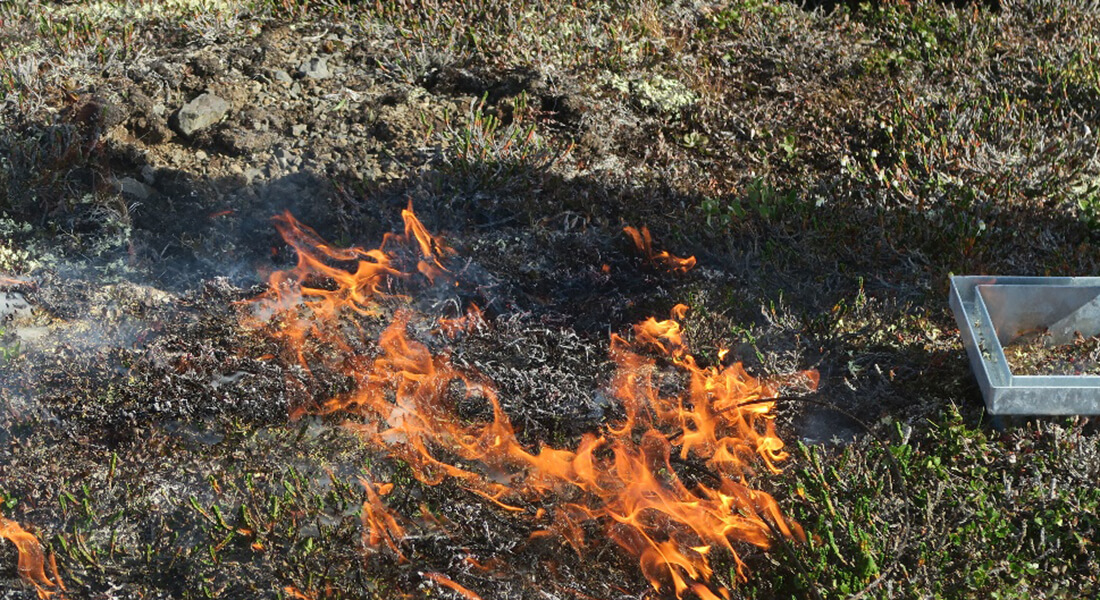Wildfires affect the greenhouse gas balance of tundra heath ecosystem
A new study at Disko Island, West Greenland shows that wildfire in dry heath tundra alters the carbon dioxide (CO2)-greenhouse gas balance and has negligible effects on methane (CH4) and nitrous oxide (N2O) fluxes.

Wildfire frequency and expanse in the Arctic have increased in recent years and are projected to increase further with changes in climatic conditions due to warmer and drier summers. Yet, there is a lack of knowledge about the impacts such events may have on the net greenhouse gas (GHG) balances in Arctic ecosystems.
This study investigated effects of an experimental fire in 2017 on CO2, CH4 and N2O surface fluxes in the most abundant dry heath tundra ecosystem in West Greenland. The study was deployed both under ambient temperatures, as well as under warmer summer temperatures achieved by using open-top chambers.
As expected, the destruction of aboveground vegetation by the fire turned the burnt area into a net CO2-source in contrast to unburnt areas that presented a net CO2 uptake. The increase in CO2 release in burnt areas was linked mainly to extinguished photosynthetic activity, but also an immediate increase in ecosystem respiration (ER). Summer warming by open- top chambers significantly increased both tundra ER and photosynthesis (GEP), yet this could not be observed where fire had occurred.
The dry heath tundra is typically a net sink to atmospheric CH4 as this greenhouse gas is oxidized in the topsoil layer. The study shows that the overall sink capacity of atmospheric CH4 was affected only immediately after the fire and remained unaltered in the subsequent years. Moreover, the tundra is also a weak source to N2O, but as for CH4, the N2O balance was not affected by fire over the three years. The negligible effects on CH4 and N2O was aligned with the lack of fire effects on soil moisture and soil temperature.
The total GHG budget, in CO2-equivalent fluxes in this well-drained Arctic dry heath emphasizes the predominant contribution of CO2 efflux following the fire. An important factor in the longer-term effects of a typical fire is therefore the rate of plant recovery and vegetation uptake of CO2.
In this study, we addressed the effects of a typical fire in a well- drained tundra with a shallow organic layer. Many wildfires cause both low and highly severely burnt areas, particularly in ecosystems with deeper peat formation, which may lead to greater effects on the net GHG budget. Thus, further research on the effect of high severity and high-intensity fires on fluxes of all three GHG in an upland Arctic tundra as well as in other Arctic ecosystems is needed.
Link to article
Hermesdorf, L., B. Elberling, L. D'Imperio, W. Xu, A. Lambæk and P. L. Ambus (2022). Effects of fire on CO2, CH4, and N2O exchange in a well-drained Arctic heath ecosystem. Global Change Biology n/a(n/a). https://doi.org/10.1111/gcb.16222
Topics
Contact
Per L. Ambus
Professor
peam@ign.ku.dk
P: +4535336626
M: +4524611987
